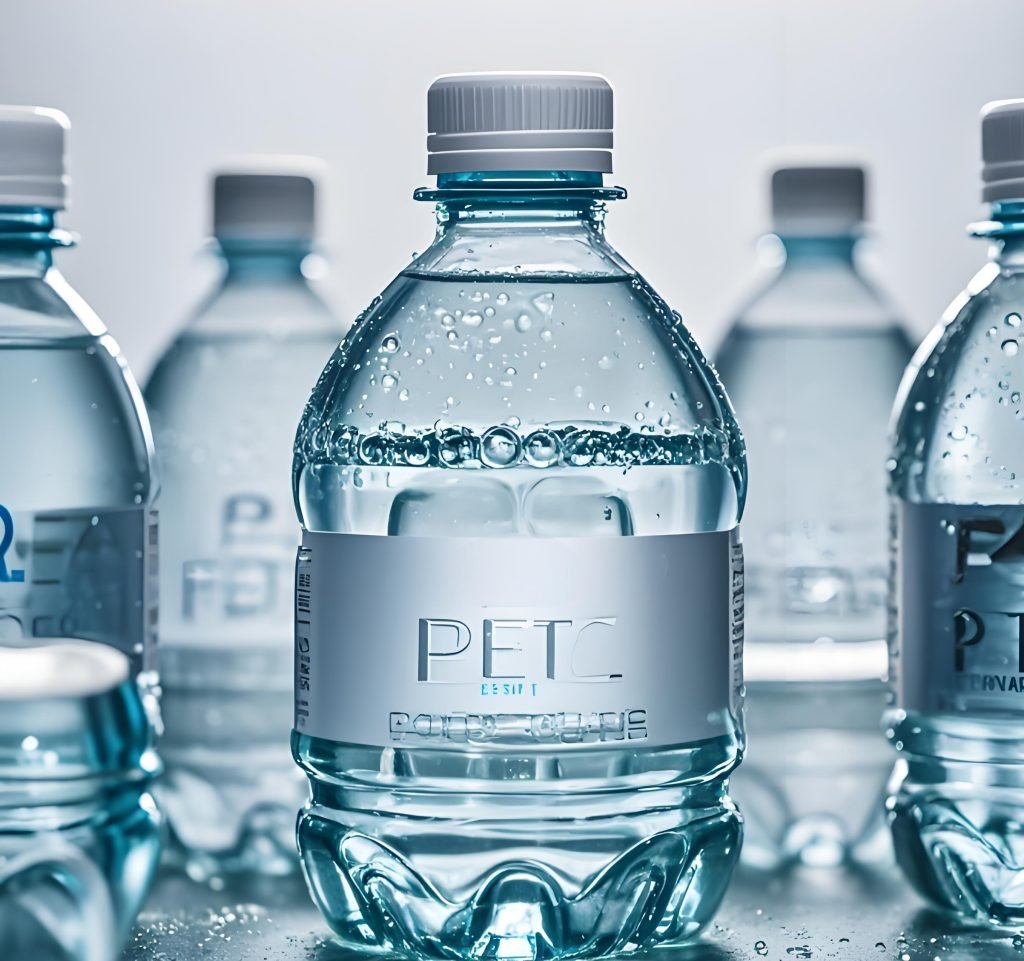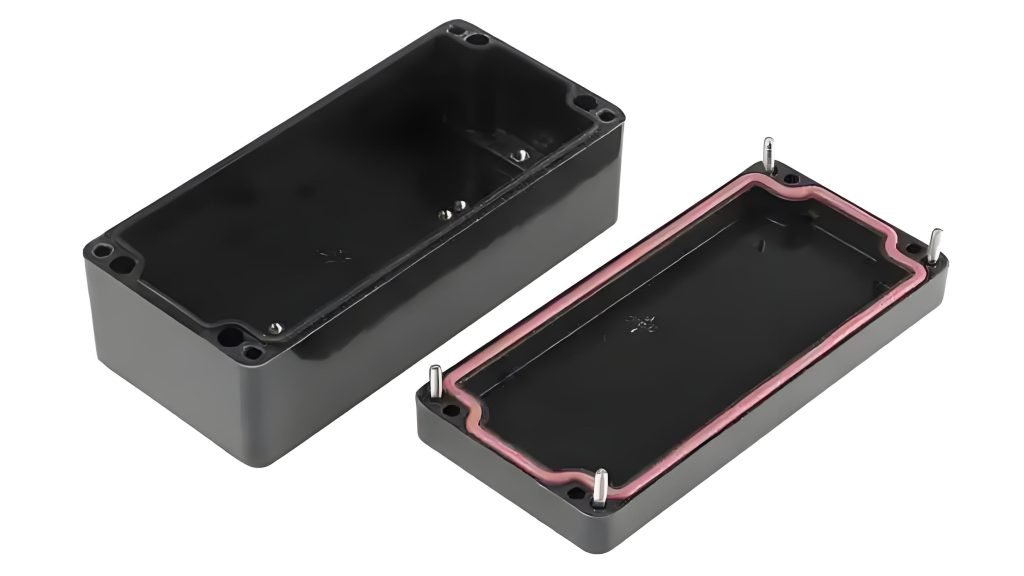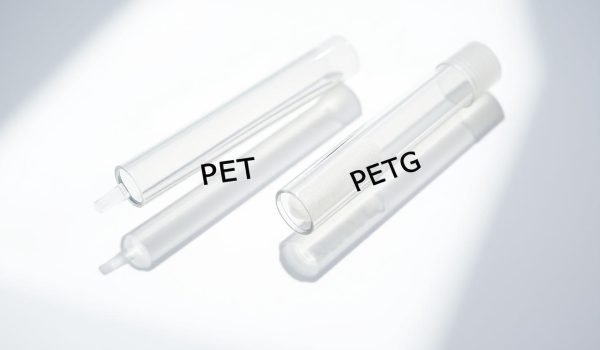Which material will give you the best mix of clarity, strength, and recyclability for your next packaging or prototype project?
You’ll get a quick, practical comparison so you can decide without extra testing or wasted budget. The guide explains core properties, typical applications, and the trade-offs that affect performance in real-world manufacturing.
Learn why one material dominates bottle and premium packaging markets for clarity and chemical resistance, while the other wins for formability, impact resistance, and easy thermoforming or 3D printing.
We also touch on processing routes, recyclability differences, and a simple framework to map your product needs to the right material choice in minutes.
What Is Polyethylene Terephthalate (PET)?
Start with the chemistry: polyethylene terephthalate is a thermoplastic polyester made from repeating terephthalate and ethylene glycol units. Its semi-crystalline structure lets it become stiff, dimensionally stable, and highly clear after processing.
Because of that structure, you see this polymer everywhere in packaging—especially bottles—where clarity, strength, and food-contact safety matter. It resists many chemicals and often produces a glass-like shelf presence without the weight or breakage risk.

What Is Polyethylene Terephthalate Glycol (PETG)?
Polyethylene Terephthalate Glycol (PETG) is a thermoplastic copolyester made by modifying PET (Polyethylene Terephthalate) — the “G” comes from adding glycol to its molecular structure, which improves PET’s inherent brittleness. It boasts key traits like high transparency (similar to glass), strong toughness and impact resistance, good chemical resistance to common substances (e.g., oils, alcohols), and ease of processing via methods like thermoforming, extrusion, or 3D printing. Non-toxic and durable, PETG is widely used in food packaging, 3D printing filaments, clear daily necessities (such as plastic containers), and even small medical parts.
Main Properties of PET and PETG: Mechanical, Thermal, Optical, and Chemical
A quick property snapshot helps you map stiffness, clarity, and food safety to the right material for your part.
Mechanical performance
Mechanically, pet is stronger and stiffer with tensile strength around 96–124 MPa and lower impact values (≈13–35 J/m). It holds thin walls and structural shapes well.
Petg trades some tensile strength (≈77 MPa) for far higher impact resistance (~90.8 J/m). Choose it when toughness and bendability matter more than peak stiffness.
Thermal behavior
The semi-crystalline structure of pet boosts dimensional stability and lets parts resist higher temperatures once crystallized. That helps shape retention under load.
Petg is amorphous, which lowers forming temperatures and reduces brittleness during deep draws, but it will soften sooner at elevated temperatures.
Optical clarity and aesthetics
For premium packaging that needs a glass-like look, pet typically gives the clearest, highest-gloss finish. Petg is clear and colorable, but can seem slightly less optically pure.
Chemical resistance and food safety
Both materials offer good chemical resistance and low odor, and both can meet food-contact rules depending on grade and processing. Check specific compliance for your application.
Pros and Cons of PET and PETG
To decide between these clear plastics, you should weigh clarity, toughness, and end-of-life handling. Below are balanced pros and cons that help you match material performance to your applications.
PET: benefits and trade-offs for packaging and rigid parts
Pros: Excellent clarity and high gloss make PET ideal for premium packaging. It holds shape well thanks to strong stiffness and is widely recycled under code 01. Packaging-grade supply is broad, which aids scale-up.
Cons: It has lower impact tolerance than some amorphous resins and can crack in deep-draw forming. In thin or cold geometries the material may behave more brittlely.
PETG: advantages for formability and durability, plus limitations
Pros: PETG offers higher impact resistance and ductility, easier thermoforming, and low shrink for large 3D prints. It colors well and shows good chemical and UV resistance for outdoor uses.
Cons: It is less commonly accepted in municipal recycling (often code 07), can be slightly less optically pure, and will soften at lower elevated temperatures than crystalline PET.
Cost and availability are generally favorable for both. Balance impact needs, clarity targets, recyclability goals, and processing realities to pick the right material for your project.
PET vs PETG: Key Differences You Should Know
Focus on the real-world differences that change how you specify materials for prototypes, displays, or clear packaging.
Flexibility, rigidity, and how glycol helps
The glycol modifier lowers brittleness and adds ductility. That makes the glycol-grade resin more flexible and tougher in dropped or bent parts.
The base crystalline resin stays stiffer. Use it when your part needs firm edges, load-bearing ribs, or tight dimensional control.
Crystallinity, dimensional control, and temperatures
Crystallizable structure gives better heat resistance and less creep at elevated temperatures.
The amorphous grade stays stable in forming but softens earlier under high temperatures, so choose by the expected service temperatures.
Forming, processing, and use cases
For high-clarity extrusion and stretch blow molding you’ll favor the crystalline option. For thermoforming, sheet work, and FDM printing, the glycol-modified grade runs easier and resists cracking.
Clarity, appearance, and recyclability
If your brand needs a glass-like finish for premium packaging, the crystalline resin usually wins on gloss and optical purity.
Recycling differs too: one is widely accepted in curbside streams; the glycol-modified option is recyclable but less commonly collected and can contaminate mixed streams if combined.
In short, pick the stiffer, clearer resin when shape and heat matter. Choose the glycol-modified option when impact resistance and easy forming drive performance.
Main Applications of PET & PETG Across Industries
Your choice of clear polymer depends on the product role: shelf appeal, toughness, or thermal endurance. This section maps common applications so you can benchmark your use case and pick the right material for performance and processing.

Typical uses for the crystalline resin
The crystalline resin is the go-to for beverage bottles, food and cosmetic packaging, and electronics housings. You’ll see it in mineral water and carbonated soft drink bottles and in thermoformed trays and blister packs.
It gives high gloss, rigid support, and reliable shelf appeal for retail packaging needs.
Where the glycol-modified grade shines
The glycol-modified grade suits 3D printing filaments, medical packaging, retail displays, and machine guards. It prints with low shrinkage, strong layer adhesion, and higher impact resistance, which makes large functional prints more reliable.
It’s also preferred for colored displays and some food-safe containers where formability and toughness matter.
High-strength and high-temperature options
When you need higher stiffness and heat resistance, carbon-fiber-reinforced options change the equation. Carbon-fiber-reinforced crystalline resin reaches higher tensile and flexural strength, greater modulus, and HDT up to roughly 120–150°C.
That makes it suitable for aerospace, automotive under-hood parts, jigs, and durable drone components. The reinforced glycol-modified choice costs less and prints easier, but it lags on dimensional stability and maximum temperatures.
Match the base resin and any fiber reinforcement to your end-use environment, mechanical loads, and precision needs to get the right balance of cost and long-term performance.
Recycling, Sustainability, and Market Context
Recycling reality and market momentum affect how you choose clear packaging materials today.
Resin codes and recycling reality
The resin that carries identification code 01 benefits from broad curbside programs. That gives your packaging better access to municipal recycling and stronger post-consumer recycled (PCR) supply chains.
By contrast, the resin under code 07 is technically recyclable but rarely accepted curbside. Without a specialty take-back, it often ends up in landfill or energy recovery despite being usable in some streams.
Market trends and what they mean for your choices
Global demand for polyethylene terephthalate hit about $44.30B in 2022 and is forecast to top $90B by 2030 at roughly a 9.5% CAGR. That strong growth keeps PCR options and price stability in a healthy range for many packaging applications.
The glycol-modified option shows steady, smaller growth—driven by displays, medical use, and 3D printing—so plan for limited recycling access and small but growing supply.
Consider total cost, end-of-life pathways, and the risk of contaminating existing recycling streams when you pick materials for your applications.
How to Choose Between PET and PETG for Your Project
Choose the right resin by ranking what the part must do, how you will make it, and how it will be retired. This simple framework helps you move from wish lists to a practical material choice fast.
Decision criteria: performance requirements, processing, and regulatory needs
Start with applications and end-use. If you need premium shelf presence and broad curbside recycling, the clear bottle-grade option is usually best for packaging.
Next, map manufacturing realities. For high-clarity extrusion and blow molding choose the crystalline route; for thermoforming, deep draws, or FDM printing pick the glycol-modified option for easier forming and better resistance to cracking.
Validate regulatory and safety needs. If food-contact or medical compliance matters, choose certified grades and confirm your converter’s processes keep the part compliant.
Quick selector: packaging clarity and wide recycling vs. formability and impact
Choice checklist: pick the crystalline resin for premium packaging clarity and access to code 01 recycling. Use the glycol-modified material when toughness, formability, and prototyping speed matter more than curbside recovery.
Balance cost and total ownership. Consider material price, processing yield, durability in service, and end-of-life handling before committing to scale.
When in doubt, prototype both plastics in small runs to verify clarity, fit, and processing windows on your equipment before committing to larger production.
Conclusion
For clear packaging and functional parts, choose the material that best matches your priorities: clarity, strength, toughness, processing, and end-of-life handling.
Consider core properties—stiffness versus ductility, chemical resistance, temperature behavior—and the real-world applications you need. Reinforced polymers can extend heat and load performance when unfilled grades fall short.
Balance performance, processing, compliance, and sustainability. With a clear view of each material’s strengths and limits, you can confidently specify the right polymer and deliver durable, high-performing products at scale.




